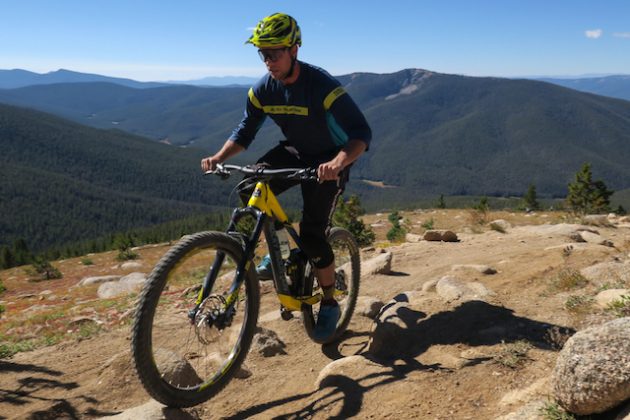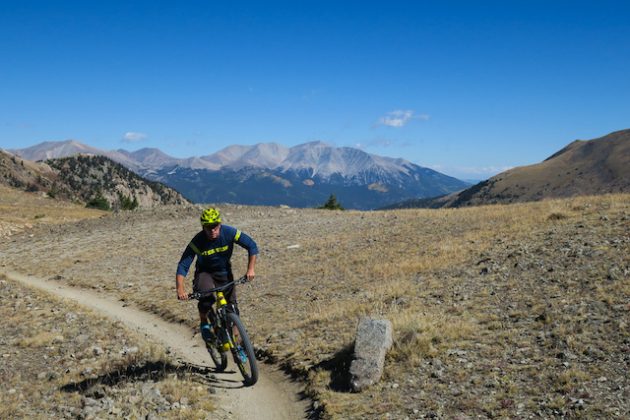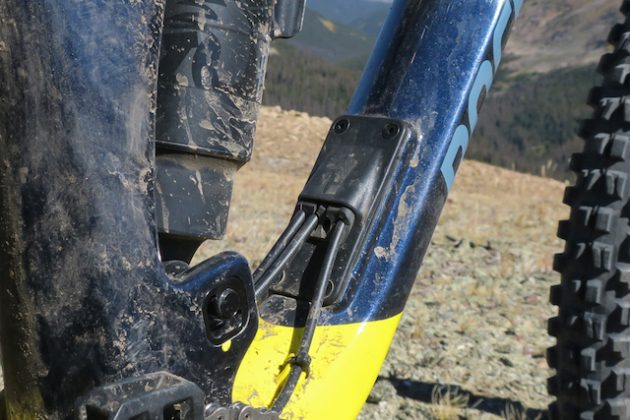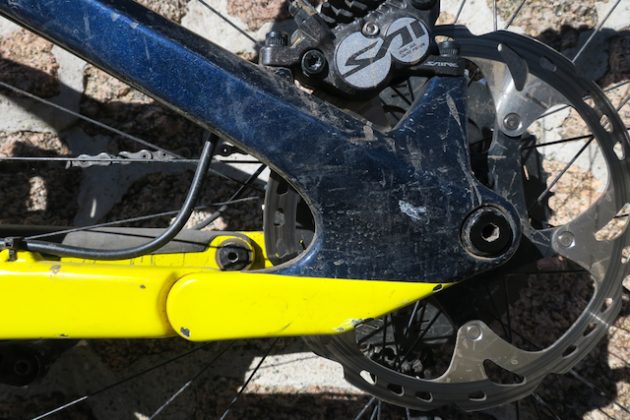First Ride: 2017 Rocky Mountain Slayer 790 MSL
Originally posted on November 15, 2016 at 10:51 amby Zach White

Weight: 29.5lbs with pedals, size Large
Sizes: Small, Medium, Large(tested), XL
MSRP: $6999
After a couple of years out of the rotation, Rocky Mountain is putting Slayer back into the mix. This is where it’d be appropriate to reminisce of the original Slayer models and share little tidbits of personal experience had on them – if not talk about lusting after the bike upon seeing Wade Simmons or one of the other Fro Riders do something really impressive on one at some point. But the fact is, I’ve never really gotten along well with the long-travel Rocky Mountains I’ve ridden over the years. At least, not until a recent fall day where I had a chance to crash a Rocky Mountain dealer camp and ride the new Slayer on one of my favorite local-ish trails.


It doesn’t really matter what the old Slayer rode like, and at this point, I don’t really care. The new one seems so fresh in its design that if it were any other model name, it would’ve been truly bad form to not find an equally fresh model name, too. Brand it Slayer, though, and it seems appropriately metal to bite the head off of its own outdated self, and adorn it on something entirely louder, faster and harder. Or, maybe longer, slacker, and plusher.

The all-carbon frame is a completely new suspension platform that provides 165mm of rear wheel travel, paired with a 170mm fork for its 27.5-inch wheels. Geometry is adjustable by the Ride-4 chip system, which a simpler version of the Ride-9 system from Rocky’s trail bikes. The important number from those four options:
| Head angle | Seat angle | BB drop | chainstay | |
| Slack | 64.75 | 73.75 | 15 | 430 |
| 65.1 | 74.1 | 10 | 432 | |
| 65.5 | 74.5 | 5 | 427 | |
| Steep | 65.85 | 74.85 | 0 | 425 |
All of they adjustments are said to minimal effects suspension settings/leverage ratios. Rocky Mountain doesn’t advertise actual BB height, and I didn’t get a chance to measure it. Based on the listed bottom bracket drop numbers (0-15 mm), we can estimate the bottom bracket
Rocky Mountain doesn’t advertise actual BB height, and I didn’t get a chance to measure it. Based on the listed bottom bracket drop numbers (0-15 mm), we can estimate the bottom bracket height at 13.1-13.7 inches.
Internal cable routing keeps the chassis clutter-free up front, and is accessible via a Di2-compatible port in the downtube, which is also said to allow fishing housing through the frame more easily. Due to the position of the housing port, along with piggyback style shock options for the Slayer, a much-appreciated set of cage mounts gets pushed a little higher than average up the downtube, leaving just enough room for most small bottles. Rear shifter housing is run through a sleeved chainstay in an effort to ease installation, and the rear brake housing runs along the top of the other chainstay, which should make mechanics happy.
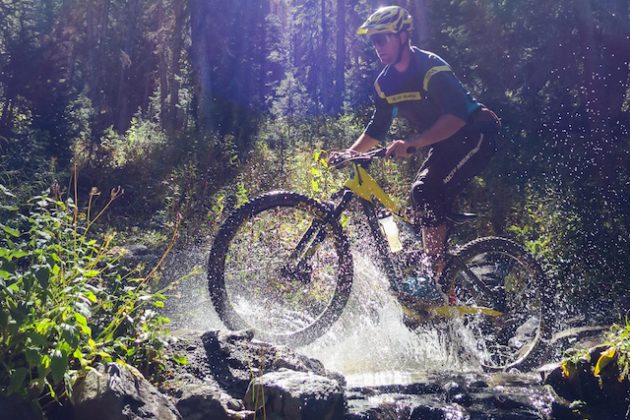
While the rear end is flared out in typical fashion to accommodate Boost spacing, Rocky Mountain opted for a somewhat reverse pivot point interface near the dropouts, ultimately narrowing width in the chainstay area for better ankle/foot clearance. For a rider with size 45.5/11 shoes that tend to sit ever so slightly duck-footed, and has had ankle clearance issues with other Boost spacing bikes, this was a welcomed design that was well executed.
The Ride

Some bikes take a little while to get used to, some are duds from the beginning, and then there’re bikes like the new Slayer that handle like they’re an extension of you from the moment you throw a leg over them. A quick spin around the parking lot hinted my preconceived notions would quickly be lambasted out on the trail from its balance and agility. Even though it was a size down from an ideal fit, the cockpit felt very reasonable and proportional.
Climbing up long, narrow and occasionally technical trail at altitudes all above 10,000-ft is never a breeze, and other bikes I’ve ridden this same trail on multiple times have provided various levels of improvement when directly compared to the 29.5-lbs all-mountain Slayer. That said, when it comes to climbing prowess in the 150-170mm travel bike spectrum, the Slayer did a very good job. While seated, there wasn’t much noticeable power loss or pedal-induced bob, and the 65.85-degree head tube didn’t feel like it was overly cumbersome. Out-of-saddle climbing did create some feedback through the suspension, but it should be pointed out that the stock Fox X2 rear shock isn’t spec’d from Rocky Mountain with a damping switch, which would’ve allowed a better pedal platform for smoother trail situations.
Once pointed downhill, any minor gripes of the Slayer not climbing exactly like a 130mm XC bike were quickly forgotten. Rough, rocky sections of singletrack were suddenly being launched over without concern, finding takeoff and landing transitions through the eyes of a downhill bike’s pilot versus someone out for a typical trail ride. On the occasion that rock gardens were hit head-on, the Slayer stayed straight and true, absorbing everything thrown at it without gripe. Tight, twisty trail highlighted just how new and improved the short chainstays are as the rear wheel was happy to be thrown hot into turns yet get out of them just as quickly. The snappy and responsive feel of the rear end carried through to a light and poppy front end, thanks to the same short chainstays that made manualling almost too easy.

The only minor concerns I had during one single ride on the new Slayer are a bottom bracket low enough to warrant all frame sizes – including large and XL – to come with 170mm cranks, and not having a damping switch on the rear shock to improve long approaches to the fun stuff. More and more modern long-travel bikes are going the route of shorter cranks so it is hard to really fault Rocky on that one. As for the climb switch, Rocky thinks there is enough anti-squat built into the suspension to negate the need for more low-speed damping. For those riders that might want it anyway, Fox does offer a 2-position switch that can be retrofitted to their X2 without losing any adjustment ability to the shock for $125(install requires bleeding the shock, so factor a $30 labor charge into the mix), but it sounds like Rocky Mountain will continue to spec the Slayer without this switch.
Overall, the Slayer gave an instant impression of being a solid contender to the already-competitive 27.5 inch all-mountain corner of the market. For the weight and amount of travel, it’s much more nimble and burden free than I would’ve imagined as it felt more like a well-sorted trail bike with bottomless travel than a DH-lite option that whines when pointed uphill or on anything less than fall-line trail. It’d still be a bit much for a daily trail bike who’s bread and butter was smoother, more mellow trails. But, for those who make a habit of spinning up to the tops of burly trails and pushing hard down them, the new Slayer may be just what you need.
